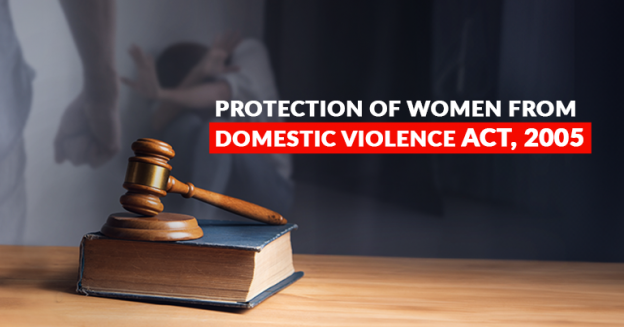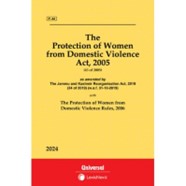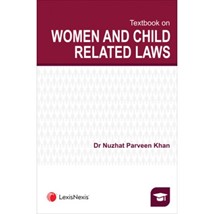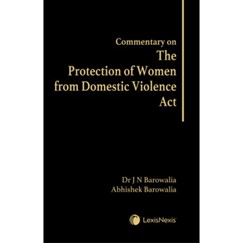Protection of Women from Domestic Violence Act, 2005

Domestic abuse poses a noteworthy problem in society impacting women and children worldwide. The Protection of Women from Domestic Violence Act of 2005 in India plays a pivotal role in providing protection, prevention, and support for those affected by violence in the families. In this blog post, we’ll explore the definition of domestic violence, different forms of abuse addressed in the law, objectives, extent, important sections of the legislation, and legal steps as well as recourse available to the aggrieved women.
Aim and Objective
The Beijing Declaration, The Vienna Accord, and CEDAW (i.e. Convention on Elimination of All Forms of Discrimination Against Women) have stated that domestic violence is essentially a human rights violation.
United Nation’s CEDAW, in its general recommendation, provided that the States should work towards protecting aggrieved women against domestic violence.
Hence, the Domestic Violence Act was enacted providing for an effective, time efficient, civil law remedy, considering the right to equality (Article 14), prohibition of discrimination on grounds of religion, race, caste, sex, and place of birth (Article 15) and right to life and liberty (Article 21) ensured by the Indian Constitution.
Preventing Domestic Violence: The Act aims to stop any form of violence, safeguarding the security and welfare of women and children, in their homes and within families and matters therewith or incidental thereto.
Supporting Victims: It establishes laws for protection of rights guaranteed under the constitution and to shield women and children from types of mistreatments such, as physical, emotional, verbal, financial, and sexual abuse.
Support and Aid Provision: The legal system guarantees that people who have suffered from violence can receive help such, as medical facilities, financial support, counselling, shelter homes, and therapy. It mandates the assignment of protection personnel and service authorities to assist those requiring assistance.
Legal recourse: It allows individuals the right to seek remedies, like court orders, living arrangements and financial aid. The legislation gives judges the authority to intervene in safeguarding those impacted.
What is Domestic Violence?
Violence that happens within a family or domestic environment, in a domestic relationship is known as domestic violence. As per Section 3 of the Protection of Women from Domestic Violence Act of 2005 (PWDVA),
“any act, omission, or commission by the respondent constitutes domestic violence if it:
(a) Harms or injures or endangers the health, safety, life, limb, or well-being, whether mental or physical, of the aggrieved person, including causing physical abuse, sexual abuse, verbal and emotional abuse, and economic abuse; or
(b) Harasses, harms, injures, or endangers the aggrieved person to coerce her or any other person related to her to meet any unlawful demand for dowry or other property or valuable security; or
(c) Threatens the aggrieved person or any person related to her by any conduct mentioned in clause (a) or (b); or
(d) Otherwise injures or causes harm, whether physical or mental, to the aggrieved person”
Who is an Aggrieved?
Aggrieved person is any woman who is or has ever been in a domestic relationship with the respondent and who alleges to have been a victim of domestic violence in any form. So, it covers a woman who has been in a domestic relation either at the time of filing of the application under the Act or in the past (Section 2(a)).
The magnitude of set-up or relationships covered under the term is wide, as it mentions of “domestic relationship” i.e. a setup where people live or have lived in a shared household and are related by consanguinity, adoption or a relationship in nature of marriage.
Who is a Respondent?
Section 2(q) defines, who a respondent can be under the proceedings of Domestic Violence Act. Earlier the act included only an adult male member. However, later the Supreme Court interpreted the provision to include even a female member, as otherwise the provision could be misused to veil an act of violence behind the shield or through a woman relative.
Types of Abuse
The Protection of Women from Domestic Violence Act (PWDVA) or the “Act” acknowledges different types of abuses, giving victims of violence and abuse the ability to pursue legal action against unlawful actions by the respondent (male or woman) and family members provided the aggrieved person is any woman who is or has been in a domestic relationship with the respondent and who claims to have been a victim of domestic violence (provided under Section 2(a)). There are various types of abuse listed under the Domestic Violence Act (Section 3, Explanation 1): –
Physical Abuse
This covers any physical violence, assault, criminal intimidation or criminal force, directed at the victim like- hitting, kicking, slapping, or causing bodily harm. Any act of a kind that causes bodily pain, harm, threat to life, limb, or health or impairs the development of the aggrieved.
Verbal and Emotional Abuse
This includes humiliation, insult, ridicule, verbal intimidation or any similar conduct towards the victim. Any repeated threats to cause pain or harm to the aggrieved directly or any person of interest to the aggrieved. This sort of conduct builds itself into emotional abuse against the victim. Examples are name-calling, manipulation, intimidation tactics or isolating the victim. The Domestic Violence specifically mentions insults directed for not having a child or a male child.
Financial Manipulation and Abuse
Economic abuse entails manipulating the victim’s situation restricting their access, to money or taking advantage of them financially.
Sexual Abuse
Encompasses any forced sexual behavior imposed on the victim without their agreement, such, as marital rape, or any abuse of sexual nature humiliating and degrading the dignity of women.
Scope and Applicability of the Act
The Act provides for various forms and modes of protection, as it acknowledges different types of abuse beyond just physical violence. This encompasses actions that cause bodily harm, emotional and verbal mistreatment leading to distress and insults, financial control and economic deprivation as a form of abuse, and any form of sexual abuse or conduct that undermines the dignity of women.
The law provides for the protection of women, such as mothers, sisters, wives, widows, and partners residing with the respondent (abuser). It applies to women in adoptive relationships too. Furthermore, it offers safeguards to women, in family setups even if they are not biologically or legally related to the respondent as long as they live under the same roof in a domestic relationship.
Important Provisions and Orders of the Act
Section 8: Protection Officers: are appointed by the State Government in every district to handle complaints, assist victims in making applications, and coordinate with the court. Preferably these Protection Officers should be female.
The Protection officer makes the ‘domestic incident report’ on the complaint to the Magistrate, ensures the provision of legal aid, medical examination and shelter home to the aggrieved woman, if required. Protection officers are officially designated to ensure the execution of monetary order.
Different Orders Under the Act-
Section 18 Protection Orders
If the magistrate is satisfied with the claim of the aggrieved (person facing abuse) (prima facie) and giving proper opportunity of hearing to the respondent, then he may pass a protection order in favor of the aggrieved and direct the respondent to stop committing and/or abetting any act of abuse, to stop entering the place of employment or if the aggrieved is a child then prevent the respondent from entering the school and to stop communicating or making any such attempt in any manner with the abused or prohibit alienation or operation of any assets, bank accounts or lockers.
Section 19 Residence Orders
Passed by the magistrate to restrain the respondent from dispossessing the victim or disturbing her settled position, and in some cases even may direct the respondent to leave from the shared household (except in cases where the respondent is a woman) even though the owner might be the respondent. Magistrate may restrain the respondents or the relatives from entering aggrieved woman’s part of shared household or from alienating or disposing off in any manner such a shared household or may otherwise order for an arrangement of an alternate accommodation for the applicant woman. Hence the order upholds the right to shared household as per section 17.
Section 20- Monetary Relief
Magistrate may direct the respondent to pay the aggrieved and any child, to cover expenses and losses, including loss of earnings, medical expenses, loss of property and for lump sum or monthly maintenance.
This monetary relief has to be adequate and reasonable, as per surrounding circumstances and the standard of living of the aggrieved.
Section 21- Custody Orders
Magistrate may at any stage of application for any other reliefs, may grant temporary custody of an child to the aggrieved or the applicant, including the orders for visitation.
Section 12 Application to Magistrate
The aggrieved person or another person representing the aggrieved (like another individual, a Protection Officer) can submit an application, to the Magistrate. This request is to ask for relied based on the rules of the Act and details the assistance and safeguards needed by the victim. The Magistrate can seek assistance of a welfare expert or can direct the party or parties to undergo counselling, if needed.
Section 31 Penalty for Breach of Protection Order
If the respondent breaches the Protection Order or the Interim one, then such act will be an offense under the provisions of the Act and the respondent will be punishable with either a fine of max. INR 20,000 or Imprisonment upto 1 year, or both.
Legal Remedies and Procedure
Section 12 Filing a Complaint
As per Section 12 of the Act, the aggrieved person or someone acting on their behalf (another person, Protection Officer), can file a complaint with the Magistrate and the Magistrate is under a legal obligation to consider the domestic incident report and can seek the required assistance for dealing with the domestic violence cases.
Court Proceedings
The magistrate, during the court proceedings has the authority to issue protection orders, for instant safety measures like preventing the respondent from reaching out to the victim. The proceedings may be held in camera if so required as per the circumstances of the case and if either of the parties to the case request so. In accordance with the case, the judge may also decide on residence orders and/or financial assistance.
Enforcement of Protection Orders
The authorities have the duty of upholding protection orders. Violating these orders can lead to consequences, such, as being sentenced to jail and/or penalties and/or both.
Related Books
Commentary on The Protection of Women from Domestic Violence Act by Dr J N Barowalia & Abhishek Barowalia
This commentary published by Lexis Nexis is a clear and concise interpretation of the Act. The Authors have thoroughly and dedicatedly done the research and deep study of the subject and compiled in a very lucid manner. The Protection of Women from Domestic Violence Act that came as special piece of legislation for a specific and quick remedy, finds all the explanations in this book. The commentary by these two remarkable co-authors, lays out diligent and comprehensive interpretation of the legal provisions, developments and standings under the Domestic Violence Act. The book provides for legal insights in a structured manner and simplifies the legal complexities involved in the Act.
Protection of Women from Domestic Violence Act, 2005 along with Rules, 2006

This bare act is comprehensive, latest edition published by Universal and Lexis Nexis and contains all sections along with the required Rules of 2006. It is an ideal read for students, lawyers and citizens.
Textbook on Women & Child Laws by Dr Nuzhat Parveen Khan

This textbook carefully and comprehensively takes readers through the legal landscape of laws governing women and children. Further, it traces the developments made in legal and policy landscape pertaining to women and child development.
CONCLUSION
Domestic abuse is a huge problem in the world with severe consequences. The Protection of Women from Domestic Violence Act, 2005 serves as a shield providing assistance and protection to those affected. This legislation acknowledges forms of abuse ranging from violence to psychological manipulation and financial abuse. It enables victims to seek orders, access medical care and shelter, or other requisite assistance from the legal or administrative machinery developed as per the provisions of the act. By familiarizing themselves with the processes and available support systems, an aggrieved person can navigate the system effectively and begin rebuilding their life. The Act offers a path toward safety, fairness and a hopeful future.
Further Reading:
Laws for Women in India: An Overview
Right to Information Act, 2005
Important Things to Know about Divorce Under Hindu Marriage Act, 1955
Family Law in India: An In-Depth Discussion and Historical Perspective


